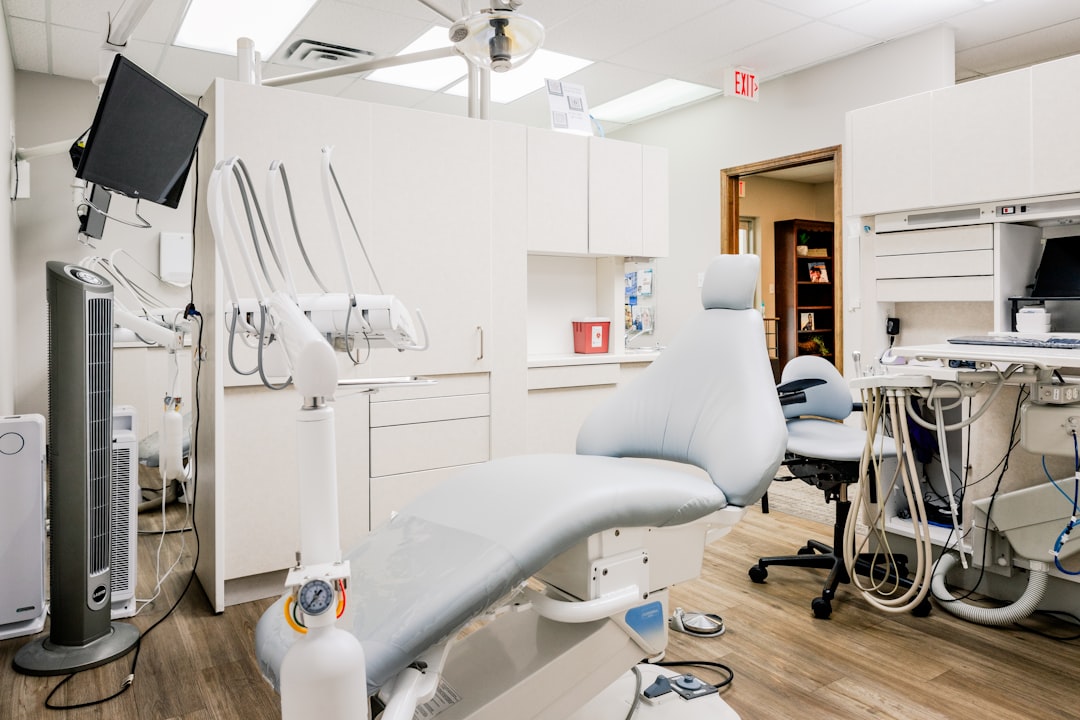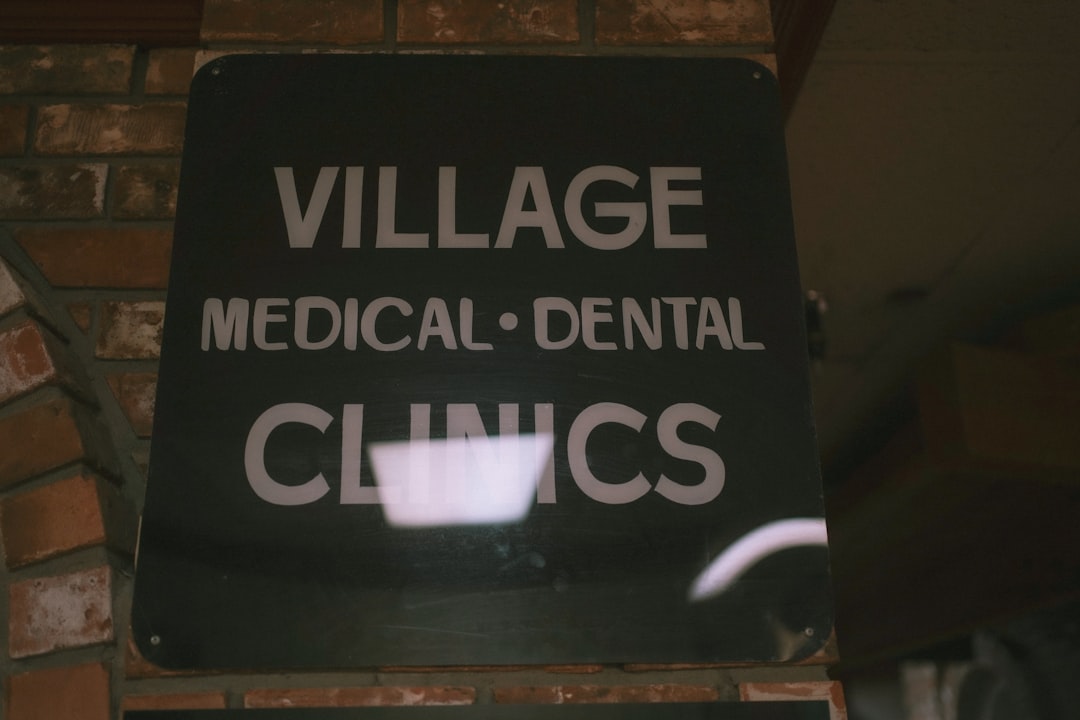

Engage prospects with a scan and streamline customer engagement with FREE QR code marketing tools by Sona – no strings attached!
Create a Free QR CodeFree consultation

No commitment

Engage prospects with a scan and streamline customer engagement with FREE QR code marketing tools by Sona – no strings attached!
Create a Free QR CodeFree consultation

No commitment
The dental insurance providers industry is increasingly competitive, with growing pressure to deliver exceptional member experiences and gather actionable insights for improving services. Yet providers often face missed opportunities to understand their members’ true needs. Traditional feedback collection methods such as paper surveys at the dentist’s office or emailed links frequently result in low response rates, delayed input, and incomplete data that cannot be quickly turned into action.
Today’s consumers expect seamless, immediate avenues for sharing opinions. Providers risk losing high-value member insights if these touchpoints are fragmented or outdated. The challenge is heightened when valuable feedback goes uncollected at critical stages of the member journey: after a claim, a new policy activation, or a routine dental visit. These gaps persist because legacy systems struggle to bridge offline interactions and digital feedback channels at scale.
QR codes present a strategic response to these persistent issues. By creating a direct, mobile-friendly bridge between physical experiences such as appointment cards, brochures, and provider office signage and digital feedback forms, QR codes can dramatically increase participation and uncover actionable information. This not only speeds up insight-to-action cycles but finally connects offline moments to marketing, enrichment, and service workflows. When QR campaigns are designed with intent and measured with modern analytics platforms like Sona QR, providers can turn every scan into a signal for service improvement, member retention, and revenue growth.

One key frustration for dental insurance providers is missing out on timely, honest feedback from members because analog feedback forms or one-time email surveys are easily overlooked. This lack of engagement not only produces incomplete sentiment data, but also allows small issues to go unaddressed until they impact satisfaction and retention. Paper surveys disappear into drawers, generic email blasts are buried in inboxes, and post-visit phone calls often miss members who prefer quick, asynchronous channels.
Modern approaches help resolve these long-standing pain points. QR codes enable providers to bridge the gap between in-person member interactions and instant digital feedback capture, empowering staff to collect real sentiment and suggestions at the very moment they matter most. Instead of hoping that members will later type a long URL or log into a portal, the provider can position a scannable code at the right point in the journey so that sharing feedback takes seconds. Examples include posters and brochures.
Abandoning manual forms and missed phone follow-ups for QR-powered, always-on feedback not only streamlines workflows, it ensures critical member insights are not lost. Automated code generation, dynamic link routing, and CRM syncing help teams close the loop on feedback quickly, escalate service issues, and identify moments that are ripe for education or upsell. Providers that make this shift move from sporadic, anecdotal input to a continuous listening program that supports better decisions across marketing, operations, and provider relations.

Providers historically struggle to connect offline touchpoints like mailed coverage updates, in-office brochures, or appointment reminders with digital feedback systems. This disconnect means potential leads and valuable opinions are often left untracked, or only surface long after an issue has compromised satisfaction or led to churn. The gap is most visible when a member completes a visit, receives an explanation of benefits, or browses a printed plan guide, then has no easy path to share a quick opinion or ask a targeted question.
QR codes remove this friction by turning every physical surface into a digital entry point. They offer a simple, universal interface for any smartphone user, so members do not have to download an app or remember complex URLs. For providers, QR codes finally make it possible to measure the performance of offline assets with the same rigor as digital channels. Each scan is a measurable signal that can be tied to specific locations, campaigns, and outcomes.
By using QR codes, dental insurance providers are not simply making engagement easier. They are mitigating the silent risk of unpursued leads and unseen feedback, ensuring that every printed piece, sign, or card can drive a relevant digital action. When linked with platforms like Sona QR, these actions generate the data needed to continuously improve member experience and business performance.

Choosing the right QR code format is essential to solving real-world engagement challenges in dental insurance settings. Providers often deal with fragmented data because critical actions such as claims inquiries or plan comparisons require cumbersome manual entry, or members drop off before completing a process. Selecting the correct destination and format aligns the member’s intent with a fast, frictionless outcome that is easy to measure.
Most dental insurance providers benefit from dynamic, trackable QR codes that can be edited post-print and instrumented for analytics. Static codes are sufficient for evergreen destinations like a general provider directory, but dynamic codes unlock advanced use cases such as location-based routing and A/B testing that support continuous optimization without reprinting.
For most dental insurance providers, dynamic web-linked QR codes offer the flexibility needed to adapt campaigns and maximize engagement. By pairing these codes with thoughtfully designed landing pages and concise forms, providers can transform passive reading into valuable actions that fuel service improvements, retention, and growth.

Dental insurance companies too often miss out on growth because points of member interaction are not connected to measurable outcomes. A member who intends to provide feedback never makes it back to the survey link. A group benefits decision-maker receives a mailer without a clear path to compare plans or request a quote. Each missed step is a lost signal that could have informed better service delivery or captured a qualified lead.
QR codes reclaim these moments. By placing scannable, context-aware calls to action at physical touchpoints, providers encourage immediate response and capture the data required to evaluate performance. Over time, scan and conversion trends reveal which offices, mailings, or campaigns drive the greatest impact. This insight guides budget allocation and informs continuous optimization of messaging, creative, and placement.
Deploying QR codes at these moments unlocks real growth potential by reducing lead leakage, surfacing hidden feedback, and guiding prospects into the right digital journeys. When combined with UTM tagging and CRM integration, these scans feed segmented audiences for follow-up via email, SMS, or paid media.

Outdated analog feedback and inquiry processes are often the root cause behind low participation and missed upsell opportunities. Replacing these with QR-enabled workflows turns every interaction into a measurable event and lowers the barrier to response. Members get convenience and clarity, while providers get data and speed.
Below are three high-impact use cases that align with common member interactions. Each converts a passive moment into an actionable outcome that supports satisfaction, retention, and revenue.
Each of these use cases transforms a passive interaction into data-rich engagement. With dynamic QR codes and short, mobile-optimized forms, providers can capture sentiment, intent, and needs in real time. These signals feed continuous improvement programs and help identify members who may benefit from education, outreach, or plan optimization. See the benefits of QR codes for dental marketing.
Dental insurance organizations frequently lack visibility into which prospects and members are truly engaged. Traditional digital tracking struggles to connect offline exposure to online behavior, while manual sign-ups and generic web visits offer little context. QR code scans, by contrast, encapsulate intent and context at the source: where the scan happened, what message it followed, and when it occurred in the lifecycle. For deeper strategy, explore Sona’s intent data guide.
By deploying multiple QR codes across touchpoints and stages of the journey, you can segment audiences automatically and use the insights to personalize follow-up. Scans from a claims-support QR should not receive the same messaging as scans from a plan-upgrade brochure. This level of specificity helps marketing and service teams prioritize time and deliver value that matches the member’s immediate need.
Modern automation makes these steps straightforward. With Sona QR, each code becomes a smart entry point that captures behavioral data at the moment of interest. Sona.com then connects those real-world signals with your digital footprint so you can turn intent into meaningful action using intent-driven retargeting.
Inconsistent or siloed marketing efforts are a significant pain point for dental insurance providers trying to nurture and convert quality leads. Offline and online channels rarely connect, leaving potentially high-value prospects without a clear, personalized path to engage. QR codes provide the connective tissue by linking physical exposure with digital destinations that are tailored, measurable, and actionable.
When implemented across media, QR codes make every asset accountable. A poster in a dentist’s office is no longer a static brand impression, it is a conversion point for feedback or education. A direct mail piece can be attributed to specific outcomes like plan upgrades or consultation bookings. Over time, cross-channel analytics reveal which combinations of message, creative, and placement perform best for each audience segment.
Centralized management and analytics make it possible to compare the true effectiveness of each channel. With Sona QR, teams can manage codes across media, monitor scan and conversion data, and sync insights with CRM and ad platforms. This connected approach helps providers allocate spend based on real member behavior, not assumptions.
Dental insurance providers often find it challenging to operationalize new engagement strategies because their teams lack a systematic framework. A structured approach to QR code campaigns eliminates guesswork and keeps every tactic aligned to a clear business outcome. The following checklist offers a repeatable process for launching, measuring, and optimizing initiatives across feedback, support, education, and acquisition.
This framework is designed to flex across B2C and group segments. It supports service teams collecting feedback in clinics, marketing teams running direct mail or media, and broker relations teams prospecting at events. Use it as a baseline, then adapt based on your goals, audience, and resources.
Clarify the objective and the member action you want to inspire. Examples include increasing post-appointment feedback response rates, capturing claims support requests, driving plan comparison engagement during renewal season, or booking consultations with benefits administrators.
Document the target audience, context, and success metrics. For post-appointment feedback, the metric might be lift in survey completions within 24 hours of a visit. For claims support, measure reduction in average handle time due to pre-filled inquiry details and faster routing.
Decide between static and dynamic codes. Static codes are suitable for permanent destinations like a generic provider directory. Dynamic codes are essential when you need analytics, retargeting, and the ability to change destinations mid-campaign without reprinting.
Select the destination format that fits the use case. Web links are ideal for surveys and plan comparisons, SMS or email formats are best for triaged support requests, and app download links support new member activation. With Sona QR, you can generate each type and manage them centrally with tracking and UTM parameters.
Align each code with your brand’s visual system. Add a short, benefit-driven CTA such as “Scan to rate your visit in 30 seconds” or “Scan for coverage details for today’s procedure.” Ensure sufficient contrast, generous quiet space around the code, and an appropriate size for the viewing distance.
Test rigorously across devices, lighting conditions, and placements. Validate that codes scan from common angles in a waiting room, on glossy mailers under household lighting, and on screens during video. Confirm that the destination loads quickly on mobile and the form is short, thumb-friendly, and accessible. Use Sona QR product overview to identify and resolve friction before launch.
Place codes where they align with member intent. For feedback, prioritize clinic posters, appointment cards, and discharge instructions. For plan education and upgrades, deploy in welcome kits, renewal notices, and targeted direct mail. For support, include on invoices, EOBs, and policy documents.
Coordinate timing and messaging with lifecycle milestones. For example, send a postcard with a plan comparison QR code three months before renewal, followed by an email reminder that references the same QR destination. Pair event signage with on-the-spot consultation scheduling codes using banners. Track distribution so you can attribute scans by channel and cohort.
Instrument every code with UTM parameters and naming conventions that reflect use case, location, and audience. Monitor scan volume, completion rates, drop-off points, and outcomes. Identify top-performing placements and messages, then redeploy budget accordingly.
Use A/B testing to improve results. Test CTA copy, color frames, placement height, and landing page variations. Feed scan data into Sona.com, your CRM, and analytics stack to build a full-funnel view from scan to conversion with multi-touch attribution. Schedule weekly or biweekly reviews to act on insights in near real-time, not at the end of a campaign.
A core frustration in service improvement is when feedback or engagement data fails to connect with tangible business outcomes such as revenue growth or improved retention. Many providers find that scans alone are not enough without downstream visibility. They need to know which scans produce completed surveys, resolved support tickets, scheduled consultations, plan changes, or renewals.
End-to-end analytics solve this by connecting real-world scans with digital journeys. With Sona QR and Sona.com, teams can track the path from first scan to form completion, CRM enrichment, and revenue attribution. This visibility allows leaders to prioritize resources, justify investments, and optimize every campaign for measurable impact.
This end-to-end tracking empowers teams to move beyond vanity metrics. Instead of reporting scan counts alone, you can show how each campaign contributes to service quality, member satisfaction, and business growth.
Many providers’ QR initiatives stall because codes are generic, not personalized, or poorly attributed, which leads to data gaps and weak learning. To maximize scan rates and ROI, build every campaign with measurement and member value in mind. Keep the promise of your CTA clear, deliver immediate utility on the landing page, and instrument everything for analysis.
Training and internal alignment also matter. Clinic staff who understand why feedback is important can encourage participation in authentic ways. Marketing and service teams who share dashboards and insights can coordinate improvements faster and build momentum across the organization.
For example, placing QR codes on member ID cards enables quick access to feedback and support resources, while invoice-based codes offer real-time claims assistance and service ratings. Both convert passive documents into living engagement channels with measurable outcomes and clear value for members.
Dental insurance providers who thoughtfully adopt QR code strategies are positioned to advance on both customer experience and business performance. By solving for the long-standing problem of missed feedback, untracked prospects, and fragmented engagement, providers can transform every offline touchpoint into a source of rich digital insight. This evolution enables more accurate segmentation, faster service improvements, and ultimately stronger, longer-lasting member relationships. Start weaving QR codes into your marketing and service workflows to move from reactive, outdated processes to data-driven engagement, delivering better satisfaction, retention, and revenue growth in a digitally connected landscape. Start creating QR codes for free.
QR codes have revolutionized dental insurance providers by transforming traditional feedback collection into an efficient, real-time engagement tool. By seamlessly gathering customer insights at every touchpoint, they empower providers to enhance member satisfaction, streamline service improvements, and ultimately reduce churn. Imagine instantly capturing detailed feedback after every claim interaction, enabling you to respond swiftly and tailor your offerings to meet patient needs more effectively.
With Sona QR, dental insurance providers can effortlessly create dynamic, trackable QR codes that update instantly—no reprinting required. This means you can monitor feedback trends in real time, connect responses directly to service outcomes, and continuously refine your customer experience strategy. Start for free with Sona QR today and turn every scan into actionable insights that drive loyalty and growth in your dental insurance business.
Dental insurance providers often face low response rates, delayed input, and incomplete data from traditional feedback methods like paper surveys and email links, resulting in missed opportunities to understand members' true needs.
QR codes create a mobile-friendly bridge between physical touchpoints and digital feedback forms, increasing participation, speeding up insight-to-action cycles, and connecting offline interactions to marketing and service workflows.
Providers should place QR codes at key touchpoints like clinic reception areas, post-appointment handouts, mailed policy updates, member ID cards, and printed materials such as posters and brochures.
Dynamic, trackable QR codes linking to web surveys, vCards, SMS or email messages, app downloads, and digital forms are effective for capturing feedback, support requests, plan comparisons, and member activation.
QR codes turn physical assets like appointment cards and brochures into measurable digital entry points, enabling instant member feedback, easy access to resources, and data collection tied to specific campaigns and locations.
Use cases include post-appointment feedback collection, plan comparisons and benefits education, and claims support or service requests, all transforming passive interactions into actionable, data-rich engagement.
By deploying unique, context-tagged QR codes across different journey stages, providers can segment audiences, personalize follow-up messaging, analyze engagement patterns, and sync data with CRM and ad platforms for targeted campaigns.
Providers should choose a clear use case and success metrics, select appropriate QR code types, design and test codes with branding and usability in mind, deploy codes across relevant channels, and track and optimize performance with analytics.
Analytics track scan details like time, location, and device, measure engagement and completion rates by channel, enable real-time response to feedback, sync with CRM systems, and attribute revenue and retention outcomes to QR-driven actions.
Using unique codes per placement, adding UTM parameters for accurate tracking, triggering timely follow-up automations, educating staff and members on scanning benefits, and integrating QR codes into all relevant touchpoints enhance engagement and ROI.
Use Sona QR's trackable codes to improve customer acquisition and engagement today.
Create Your FREE Trackable QR Code in SecondsJoin results-focused teams combining Sona Platform automation with advanced Google Ads strategies to scale lead generation

Connect your existing CRM

Free Account Enrichment

No setup fees
No commitment required

Free consultation

Get a custom Google Ads roadmap for your business






Launch campaigns that generate qualified leads in 30 days or less.
